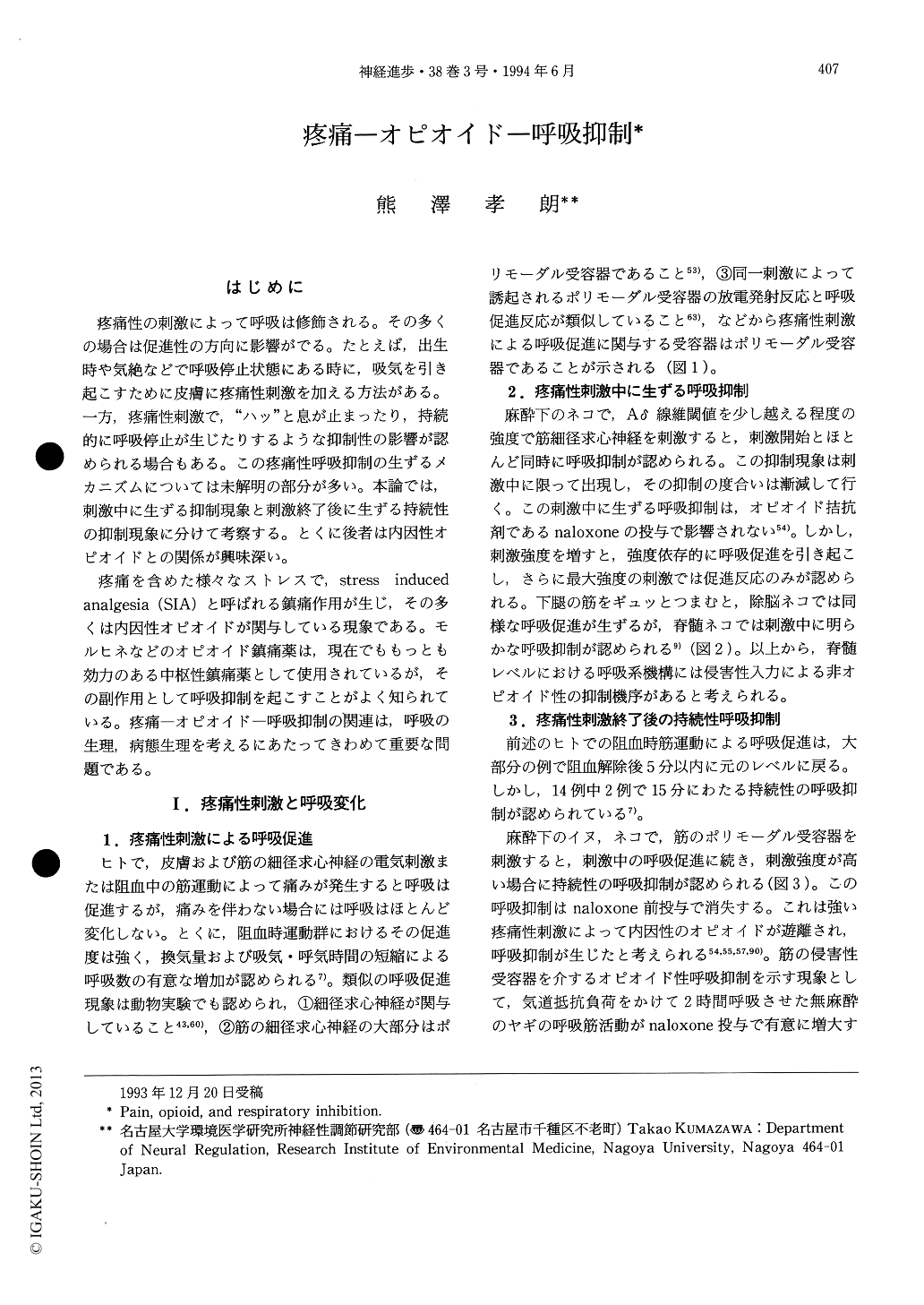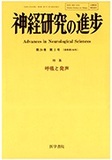Japanese
English
- 有料閲覧
- Abstract 文献概要
- 1ページ目 Look Inside
はじめに
疼痛性の刺激によって呼吸は修飾される。その多くの場合は促進性の方向に影響がでる。たとえば,出生時や気絶などで呼吸停止状態にある時に,吸気を引き起こすために皮膚に疼痛性刺激を加える方法がある。一方,疼痛性刺激で,“ハッ”と息が止まったり,持続的に呼吸停止が生じたりするような抑制性の影響が認められる場合もある。この疼痛性呼吸抑制の生ずるメカニズムについては未解明の部分が多い。本論では,刺激中に生ずる抑制現象と刺激終了後に生ずる持続性の抑制現象に分けて考察する。とくに後者は内因性オピオイドとの関係が興味深い。
疼痛を含めた様々なストレスで,stress induced analgesia(SIA)と呼ばれる鎮痛作用が生じ,その多くは内因性オピオイドが関与している現象である。モルヒネなどのオピオイド鎮痛薬は,現在でももっとも効力のある中枢性鎮痛薬として使用されているが,その副作用として呼吸抑制を起こすことがよく知られている。疼痛―オピオイド―呼吸抑制の関連は,呼吸の生理,病態生理を考えるにあたってきわめて重要な問題である。
Reaction and adaptation to noxious environments are essential functions of all organisms. The most primitive nervous reflex in vertebrates is the “coiling reflex” observed in the protochordate, which is a nociceptive withdrawal reflex. From the viewpoint of evolution, it is thought that the entirety of nervous regulatory systems may be based on this primitive withdrawal reflex: that is, the nociceptive system. Before the evolution of the nervous system, humoral mechanisms such as immune and inflammatory reactions played an important part in bio-warning and defense mechanisms.

Copyright © 1994, Igaku-Shoin Ltd. All rights reserved.


